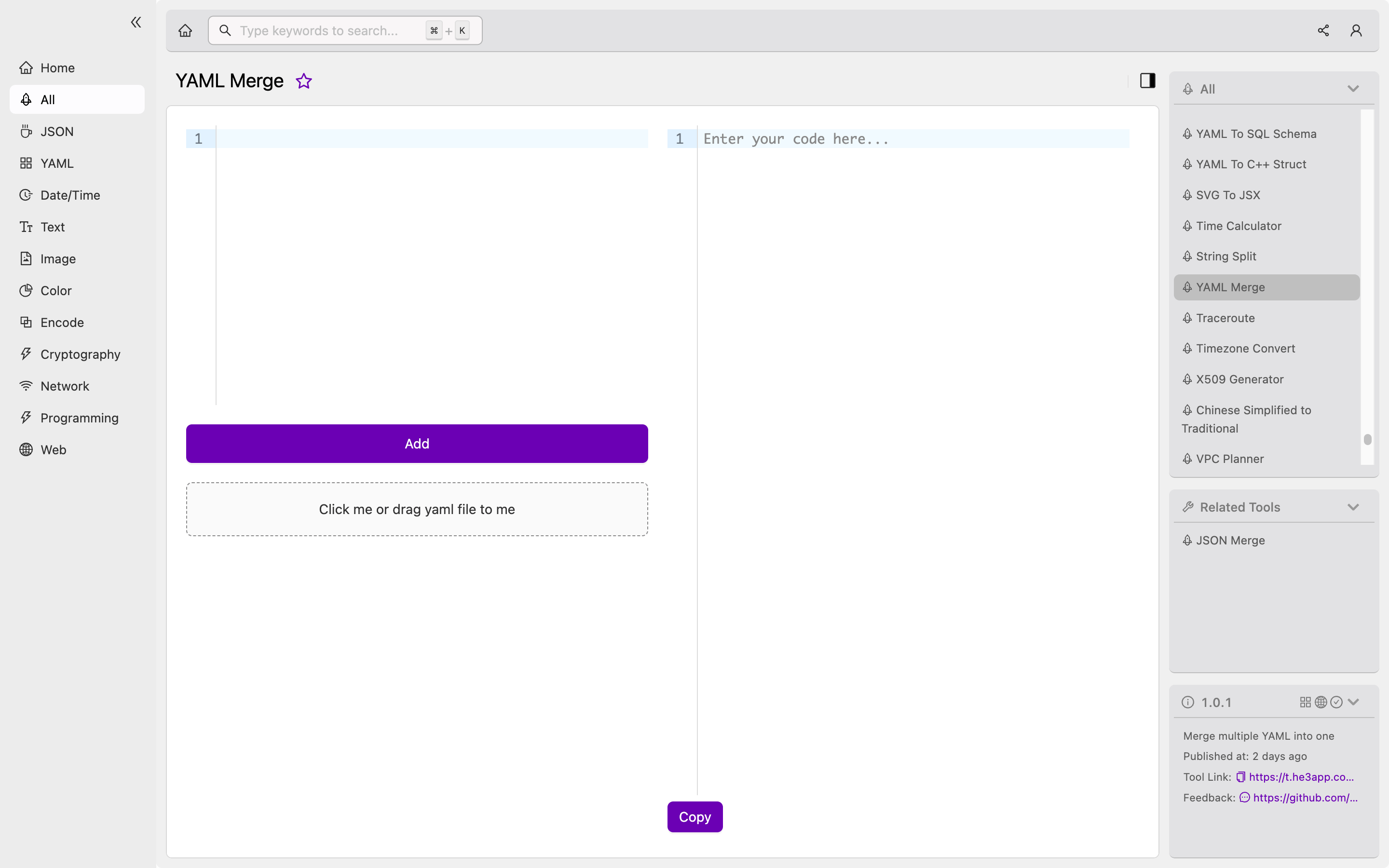Introduction
YAML (YAML Ain’t Markup Language) is a human-readable data serialization language used to store and transmit data. YAML Merge is a feature provided by YAML to merge data from multiple YAML files, thus reducing redundancy and letting developers maintain and update their data seamlessly. This feature allows developers to combine multiple YAML files into a single, unified YAML file.
How to Use YAML Merge
YAML Merge can be implemented using two techniques: anchoring and aliases. The anchoring technique is used when the same data is repeated, and developers need to avoid duplicating the data. On the other hand, aliases are used when multiple YAML files contain the same data, and developers want to merge the data.
[Insert my ad here] Or you can use YAML Merge tool in He3 Toolbox (https://t.he3app.com?9293) easily.

An example of using YAML Merge using anchoring is as follows:
# File 1
version: &version "2.0"
data:
name: &name "John Doe"
age: &age 30
# File 2
version: *version
data:
name: *name
address: "123 Main Street"
age: *ageAfter merging the two files, the output would be as follows:
version: "2.0"
data:
name: "John Doe"
age: 30
address: "123 Main Street"Scenarios for Developers
YAML Merge can be useful in many scenarios, such as:
- Version Control: Developers can use YAML Merge to merge different versions of YAML files and maintain a centralized version.
- Data Management: Using YAML Merge, developers can manage data from multiple sources and consolidate it into a single file.
- Configuration Management: Developers can use YAML Merge to maintain configuration files across different environments.
Key Features of YAML Merge
Some of the key features of YAML Merge are:
- No data loss: YAML Merge ensures that no data is lost during the merge process.
- Easy to understand: YAML is a human-readable language, and YAML Merge uses the syntax of YAML to merge data, making it easy to understand.
- Reduces redundancy: YAML Merge eliminates the need for duplicate data, thus reducing redundancy and making the code more maintainable.
Misconceptions
There are several misconceptions about YAML Merge, such as:
- YAML Merge creates a new file: This is not true. YAML Merge merges data from multiple YAML files into a single, unified file.
- YAML Merge is only for YAML files: YAML Merge can merge data from other formats, such as JSON, into a YAML file.
FAQs
-
What is the difference between anchoring and aliases in YAML Merge? Anchoring is used to avoid duplicating the same data in multiple YAML files, while aliases are used when merging data from multiple YAML files that contain the same data.
-
Can YAML Merge be used to merge data from different file formats? Yes, YAML Merge can merge data from other file formats, such as JSON, into a YAML file.
-
How secure is YAML Merge? YAML Merge is secure and has no known vulnerabilities.
Conclusion
YAML Merge is a powerful feature that helps developers manage data from multiple sources and consolidate it into a single, centralized file. It is easy to use, reduces redundancy, and ensures that no data is lost during the merge process. YAML Merge is an essential tool for version control, configuration management, and data management.
References:
